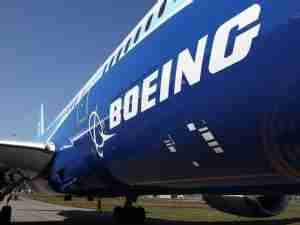Elbows fly in Airbus and Boeing battle over mini-jumbos
posted by AJOT | Jul 02 2013 at 08:00 PM | Air Cargo | Liner Shipping
At almost $1 million a square meter, big jets are the world's most expensive real estate, surpassing London's "Billionaire's Row." Little wonder then, that a row over elbow space is sharpening the latest contest between Airbus and Boeing.
After years of scrapping over smaller, short-haul aircraft, the world's dominant plane makers are turning their attention to one of the most profitable, but risky, parts of their business, as Boeing moves to defend its popular 777 "mini jumbo" from the largest version of Airbus's brand-new A350.
At stake is Boeing's continued dominance of orders worth hundreds of billions of dollars for the largest twin-engined jetliners, driving growth and connectivity between continents.
"It is the part of the market where the dollars are ... and where airlines are able to differentiate and get a price premium for their services," said Jerrold Lundquist, managing director at the Lundquist Group, an aerospace consultant for 30 years.
Boeing has controlled this piece of the industry chess board for a decade. Until recently its best-selling 365-seat 777-300ER had little direct competition and the successful niche has boosted Boeing margins and helped fund other projects.
After a slow start, Airbus is scoring key wins and building up a serious threat to Boeing's mini-jumbo franchise with a 350-seat version of its new carbon-fibre jet, the A350-1000.
Boeing is now offering a revamped "777X" with new engines and a wingspan as wide as its original 747 jumbo is long.
Both aim to offer airlines the most money-making jet in the 350-400 seat market, a cornerstone of future demand as global growth pushes up demand for long-haul trade and tourism.
Airbus sees 20-year demand for 1,900 such jets, built to fly non-stop from Dubai to Los Angeles or Singapore to London.
Tensions erupted at last month's Paris Airshow, where both sides claimed to be winning on economics and comfort - two features that do not always mix when it comes to crowded economy cabins - and accused the other of pushing up the number of seats in their presentations to offer airlines lower unit costs.
"(Boeing) are flailing around trying to work out what to do," said Airbus sales chief John Leahy, urging reporters to "stop using that function key" that says Boeing is winning.
Boeing conceded Airbus had outsold it in the past five years after delays on its 787 model, but said it still led the long-haul jet market on every other score, including order backlog.
"Don't bet against us," said Chief Executive Jim McNerney.
Airbus says its A350-1000 will burn 25 percent less fuel per seat than the 777-300ER when it enters service in 2017.
Boeing says its 406-seat 777-9X will burn 20 percent less fuel per seat than the 777-300ER, while giving airlines 41 more seats from around 2020, subject to board approval to build it. A longer-range 777-8X is expected to come with 355 seats.
Such promises have a powerful multiplier effect.
The cost of operating a large jet over its 20-year life is several times its purchase price. For planes like the 777 or A350-1000, designed to fly 16 hours a day, every percentage point in fuel saved tomorrow is worth fighting for today.
Both manufacturers will be chasing customers in coming weeks to validate their claims. Buoyed by an order from major Boeing customer British Airways, Airbus is aiming for a breakthrough at Japan Airlines, which says it is looking at both models.
Boeing, meanwhile, is hoping for a major 777X launch order from Emirates as early as November.
But picking apart the numbers shows the trade-offs that airlines will have to consider when making their decisions.
Behind the Sales Pitches
According to sources familiar with confidential briefings, a new 777X engine should increase fuel efficiency per seat by 10 percent and its outsized carbon-fibre wings - designed to fold upwards at the tip when parked - will contribute 7 percent.











